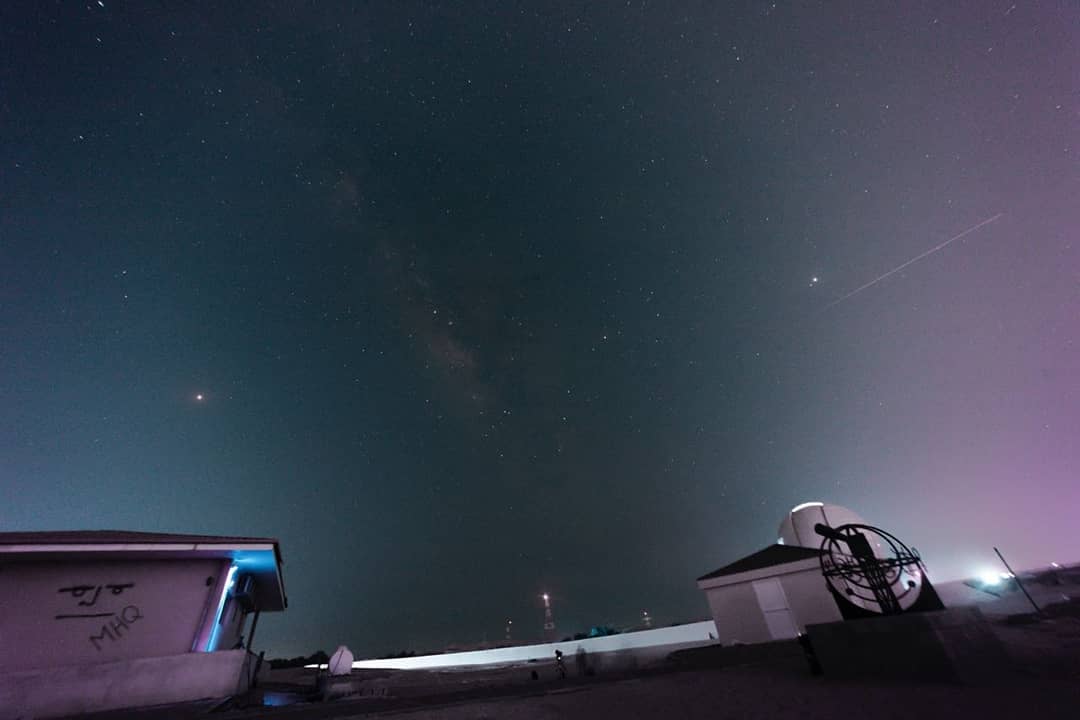Last August 12 -13, 2018, Al Sadeem Astronomy (ASA) Observatory performed visual monitoring of the Perseid Meteor Shower.
The weather condition during the celestial event was generally warm and humid. Due to high humidity and 50% of the sky was obstructed by light pollution, only 14 bright meteors of magnitudes between -1.5 and 1.75 were observed throughout 5 hours of observation from 10:30 PM, August 12, 2018 until 3:30 AM, August 13, 2018. The team was able to monitor and capture some well-timed images of radiating meteors alongside the Milky Way galaxy. Also visible in the night sky during those times were planets Mars, Saturn, and Jupiter.
ABOUT THE PERSEIDS
The Perseids is a prominent meteor shower event which occurs every peaking on the late evening hours until sunrise of August 11-13 every year. This meteor shower is associated with comet 109P/Swift-Tuttle which leaves a trail of space debris along its orbit. Attracted by Earth’s gravity, this space debris consist of rocks, dust and ice of variable sizes enters the earth at supersonic speeds (about tens to hundreds of kilometers per second) and penetrates the earth’s atmosphere through suppression and friction, causing it to burn up. The meteor or more commonly known as “shooting/falling star” is the product of this burning mechanism.


Fortunately, there was no moon light that interfere the night sky as the waxing crescent moon set early in the evening, thus increased the chance of seeing more meteors.
Under completely clear and dark skies, it was projected to produce over 100 meteors per hour. However, this will be greatly reduced as light pollution and humidity increases.
The name of the meteor shower Perseids was derived from which constellation the meteors seem to radiate from (known as the radiant), particularly Perseus (the warrior) which is seen in the northeastern portion of the sky from midnight onwards.

Here are the highlights of this celestial event. Wide-field night sky images courtesy of Thabet Al Qaissieh/Al Sadeem Astronomy.





